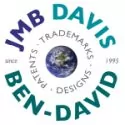As an entrepreneur, have you ever considered that your brand or product name could become so famous and successful, and its market dominance so pervasive, that it becomes a victim of its own success? This may sound counter- intuitive but, unfortunately, it happens more often than you may realize. This phenomenon is often referred to as "Genericide", and it occurs as a result of extensive and uncontrolled use by consumers whereby a well-known and once protected trademark becomes so dominant and pervasive that it loses its association and identification with the source of a product or company to which it relates. Instead, it becomes a generic name for a whole class of goods or products. It is a nightmare scenario for all successful brand owners and trademark owners alike as it results in the loss of trademark rights.
In this first part of a three-part series on "Genericide," I will explain what it is and how it is determined. In the second article I do a deep dive into the trademark spectrum to determine distinctiveness and trademark strength, give some familiar examples of "Genericide" and discuss the legal standard which courts use to determine if it exists with respect to a specific trademark. In the third article in this series, I will suggest a number of key avoidance strategies and preventative measures to be adopted to avoid "Genericide" sounding the death-knell to your well-known brand and even putting your entire business at risk.
What is a Trademark?
There is no more important or valued asset that differentiates your brand, product or technology from its competitors and underpins its place in the market space you occupy than your brand name and trademark, product name and logo. According to one recent estimate, brands account for, on average, 17% of corporate enterprise value. As published in an article here.
The world`s most valuable brand unsurprisingly is AMAZON® which was recently estimated at a brand value worth a staggering US $ $415.9 billion, as published by the World Branding Forum here.
A trademark can be a word, name, symbol, logo, design, or any combination thereof that distinguishes the goods and services of one party from those of others and indicates the source of the goods and services. Anything that you use to identify your brand or business can be a trademark. Famous trademarks include everything from McDonalds` golden arches to Nike`s "JUST DO IT®" slogan, to "AMAZON®", or "MICROSOFT®". It is this valuable IP which acting as a source identifier distinguishes your business and its brand and products from that of its competitors and is a key source of shareholder value. Brand recognition and association with a particular company is therefore the cornerstone of a trademark.
The Trademark Spectrum: Determining Distinctiveness and Trademark Strength
Impactful marks that are registrable and legally protectable can be drivers of success. Coming up with unique, strong trademarks, whether they are names, logos or service marks, and protecting them should be a priority for all businesses, be they startups or well-established companies.They are a company`s face to its customers and investors and to the rest of the world. Weak, poorly chosen marks, on the other hand, can be risky and may become vulnerable to loss of trademark protection. They can be used by and diluted by others, and they can be hard to stand out in the market. Even strong marks when misused by their owner to describe a branded product can be diluted and genericized.
A successful trademark is one that allows consumers to instantly identify a specific company`s products – think of APPLE® and its products, or the Nike SWOOSH®. Today, APPLE® has become one of the most recognizable brand logos in the world, and the most valuable, having a worth of $241 billion alone, as published by Forbes.
The strongest trademarks are words that don't have any meaning to the general public outside of the company`s own identification of them with specific goods. In other words, the more "fanciful" the trademark, the stronger it is – SONY®, FACEBOOK®, NINTENDO® are good examples. The strongest legal protection is afforded to trademarks that are considered distinctive. The distinctiveness of a trademark may fall in any of several categories in a spectrum from most to least distinctive.
This distinctiveness spectrum comprises five categories which include- fanciful, arbitrary, suggestive, descriptive or generic marks. These categories are broken down to reflect the relative strength of the mark from the perspective of its distinctiveness and its strength of registrability and protection. The category your mark falls into will significantly impact both its registrability and your ability to enforce your rights in the mark.
What is Genericide?
Genericide occurs when extremely popular marks that started out as valid fanciful, arbitrary, suggestive, or descriptive marks become generic over time because consumers start associating these marks with the products and services themselves instead of the specific source of the products and services. This is not an unusual occurrence at all. It does not happen overnight but occurs over time through constant misuse, whereby the owner does not adequately enforce its marks. It can also occur though misuse by an owner, normally a small company, that becomes so enraptured by its trademarks` marketing appeal that it mistakenly believes that the more they are used to mean the goods to which they are attached the better it is for the marketability and success of its products. Subsequently, these owners wake up to the stark reality that they can no longer claim that their mark is anything more than a generic description of all associated goods or services for such product class, regardless of its source. One type of situation in which marks are particularly at risk to Genericide is when they are the first to enter a particular retail space or market where no generic term exists. For such first- of- its- kind products, the product name and registered mark are very often adopted as the generic name for the type and genre of product and no longer serve as a source identifier for that particular product.
Your brand and trademark rights are central and vitally important to the success of your business. Discuss the risk of Genericide of your trademark portfolio with your trademark attorney and ensure your trademarks are adequately protected and safeguarded to protect them from loss of trademark rights.
The content of this article is intended to provide a general guide to the subject matter. Specialist advice should be sought about your specific circumstances.

